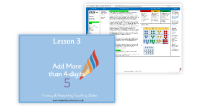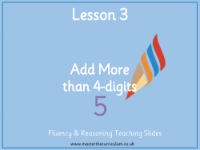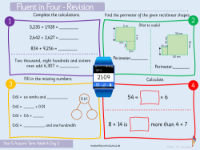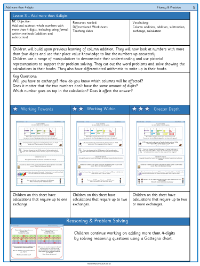Addition and Subtraction - Adding whole numbers with more than 4-digits - Planning
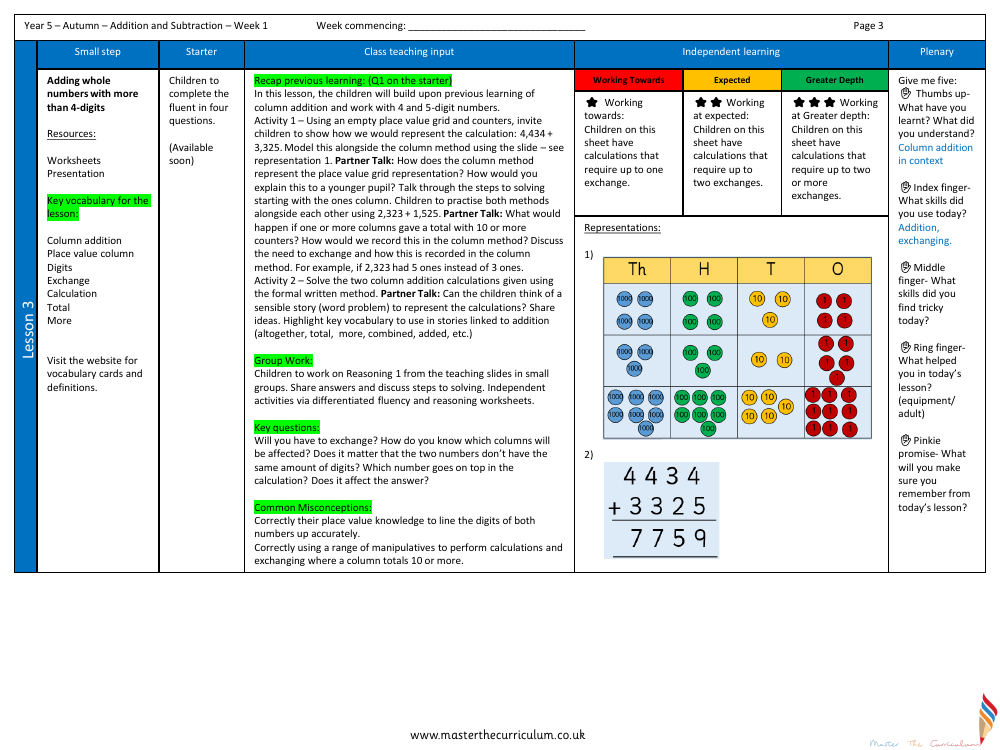
Maths Resource Description
During the first week of the Autumn term, Year 5 pupils are introduced to adding whole numbers with more than four digits, expanding their understanding of column addition. The lesson begins with a starter activity that encourages children to recall their previous knowledge of column addition. The class then progresses to an activity where they use place value grids and counters to visually represent and calculate the sum of 4,434 and 3,325. This is paired with the column method to highlight the correspondence between the two techniques. Through discussion, the pupils explore the concept of exchanging when a column totals ten or more, and the correct way to record this in the column method. Subsequent practice involves solving similar problems and creating word problems to contextualise their calculations, reinforcing key vocabulary such as 'total' and 'combined'.
The lesson includes group work where children tackle reasoning problems collaboratively, followed by independent activities with worksheets tailored to different levels of fluency and reasoning. Key questions prompt pupils to consider the implications of exchanging digits and the importance of aligning digits correctly regardless of the number of digits in the numbers being added. The lesson aims to clear up common misconceptions, such as ensuring correct place value alignment and the use of manipulatives for calculations. A reflective 'Give me five' activity concludes the session, prompting students to consider what they have learned, the skills they have used, and what they found challenging. Differentiated learning objectives are set for varying levels of understanding, with some children working on calculations that require one exchange, while others tackle problems that require two or more exchanges, catering to those working towards expected levels or at greater depth.

